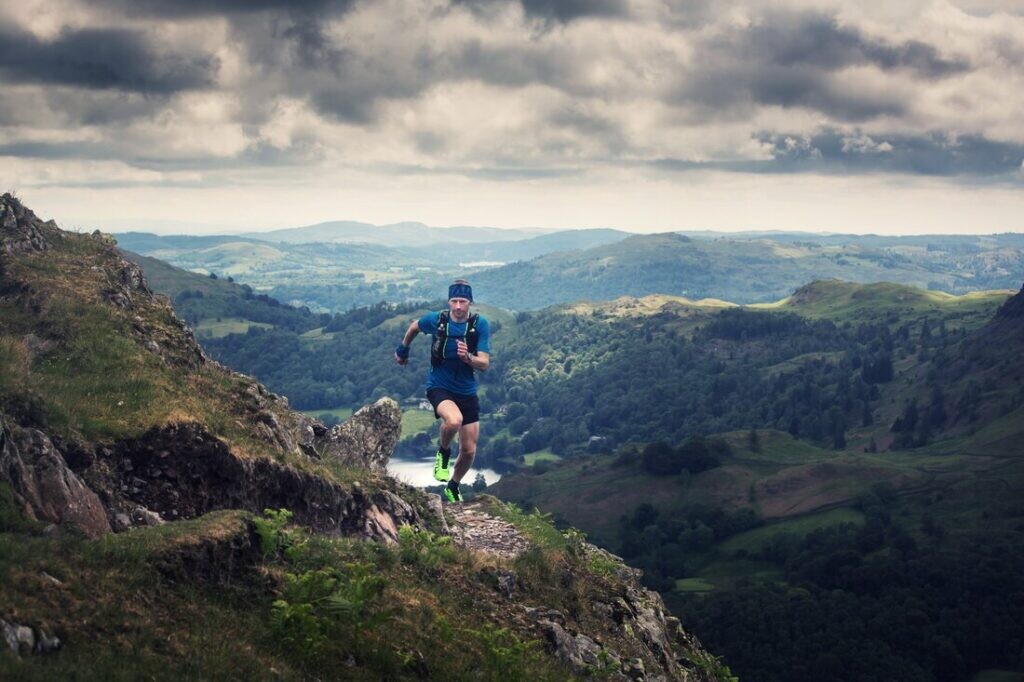Running News Daily
Running News Daily is edited by Bob Anderson. Send your news items to bob@mybestruns.com Advertising opportunities available. Train the Kenyan Way at KATA Kenya and Portugal owned and operated by Bob Anderson. Be sure to catch our movie A Long Run the movie KATA Running Camps and KATA Potato Farms - 31 now open in Kenya! https://kata.ke/
Index to Daily Posts · Sign Up For Updates · Run The World Feed
Three things this pro ultrarunner is doing to save the planet
Ultrarunner, coach and activist Damian Hall is taking steps to tackle the climate emergency and has advice for runners who want to do the same. U.K.-based Hall is a record-breaking endurance athlete who holds multiple huge FKTs, including the Cape Wrath Trail, Wainwright’s Coast to Coast and the Pennine Way; he also took fifth at UTMB in 2018.
Hall uses his record attempts to raise awareness about the climate emergency, including taking public transport to races and fuelling without animal products or plastic waste. He collects litter and raises money for Greenpeace on his runs, and has recently written his second book: We Can’t Run Away From This.

Hall is also co-founder of The Green Runners, a group that strives to inform runners about their impact on the planet (when training, eating and racing) so they can make decisions about how to change their behaviour.
“Though I think individuals should only fuss about their individual CO2e [carbon dioxide equivalent] footprint so much, there are three big areas where we can reduce our impact,” says Hall. Travel, diet and gear (or kit, as Hall calls it) are what Hall calls the big three. Here’s what we can all do.

Limit travel to races
“For most runners and outdoor folk, the largest slice of their individual emissions will be caused by travel, which accounts for one-fifth of global emissions. Flying is the most carbon-intensive thing we can do, Hall recently explained to Adventure Books.
Hall suggests using public transportation as much as possible, but that can be tricky in North America. Public transportation (i.e., trains) is not nearly as accessible in Canada as in Europe, and with many runners living outside of big cities, travel can seem like a necessary evil in order to race.
While carpooling whenever possible helps, I asked Hall for more suggestions around this. “That’s tricky, and I think individuals who already care and are already making sacrifices shouldn’t punish themselves too much further. We should continue to do the things that give us joy, but maybe with a little less harm to the planet where possible,” says Hall.
Hall’s tip: “Nowadays I ask myself: A. Do I really need to do the race? B. If so, what’s the lowest-carbon way I can practically travel there? C. Can I stay longer and/or make more out of the trip? D. Offsetting definitely isn’t the solution, but I do it anyway.”
Eat less meat
“Eating meat is terrible for the planet,” says Hall. “Meat and dairy alone are responsible for 18 per cent of global CO2e, more than travel. Beef is by far the worst offender. This graph turned me vegan,” he adds. “A quarter of our footprint comes from food, and it can be reduced by over 70 per cent simply by cutting out animal flesh and juices.”
What about locally or sustainably-raised meat? Hall says it’s just as bad. “Eating local isn’t usually better environmentally (90 per cent of international food is shipped, which is really efficient). “Food waste is also far more significant than where the food came from and what it’s wrapped in,” he explains.
Buy less gear
Those shoes you purchased because they were touted as eco-friendly? Hall says they’re part of the problem. ‘The industry excels at “greenwash,” bandying phrases like “eco-friendly” about while pumping out an endless stream of products in what constitutes an overconsumption crisis,” he explains. The running shoe industry is responsible for approximately the same annual emissions as the entire U.K., Hall shares.
“Those shoes are almost all made from plastic (i.e., fossil fuels), almost all are non-recyclable and brands tell us we should bin our daps after 300 miles in case they injure us (which no studies prove),” says Hall. Our running attire is just as bad. “The clothing industry as a whole is responsible for many times more pollution again, possibly as much as 10 per cent of global CO2e,” adds Hall. “And then there’s the large range of environmental and ethical issues around the production process.”
Hall’s tip: “The most sustainable kit is the stuff we’re already wearing. We need to buy less and make it last longer.”
‘To me it’s fairly simple: do your best with the big three: travel, kit and diet. No one is, or can be, perfect. We’re just seeking progress,” says Hall, explaining that we don’t need to entirely give up the things we love. He has one more tip for us–advocate. “Help push for system change. Join protests, vote, email your representatives, push for changes in your local running club or race.”
by Keeley Milne
Login to leave a comment




